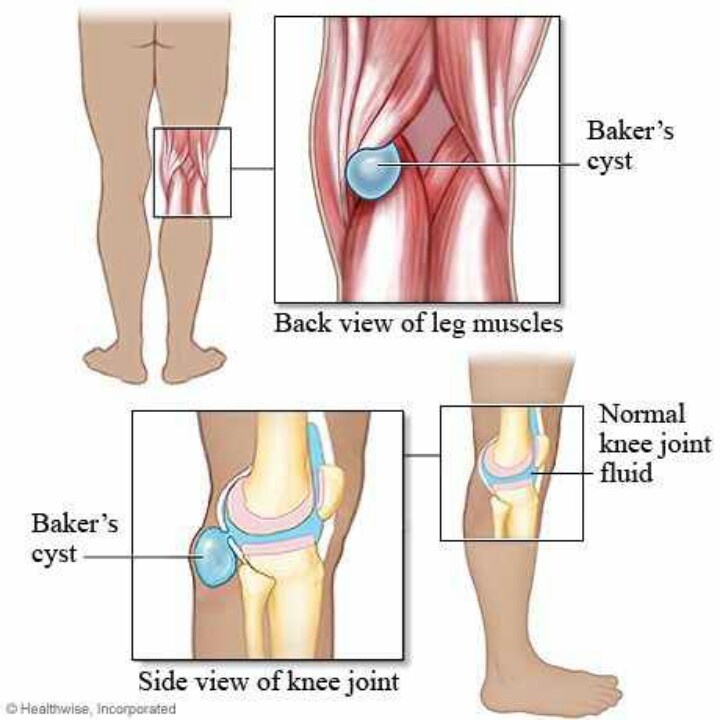Bites behind knees. Chigger Bites: Symptoms, Treatment, and Prevention of These Tiny Pests
What are chiggers and where do they live. How do chigger bites look and feel. What are the best ways to treat chigger bites. How can you prevent chigger bites when outdoors. Are chigger bites dangerous to your health. How long do chigger bites typically last.
What Are Chiggers and Where Do They Thrive?
Chiggers, also known as red bugs, are tiny mites that can cause intensely itchy bites. These microscopic arachnids are barely visible to the naked eye, measuring less than 1/150 of an inch in their larval stage. Adult chiggers are slightly larger at about 1/60 of an inch with eight legs, while the biting larvae have six legs and a distinctive red coloration that turns yellowish after feeding.
Where can you encounter chiggers? These pests prefer:
- Tall grass and weeds
- Berry patches
- Wooded areas
- Moist environments near lakes and streams
- Overgrown areas in backyards
Chiggers are most active during warm weather, particularly in spring, summer, and early fall. They become inactive when temperatures drop below 60°F (16°C) and die off at temperatures under 42°F (6°C).

The Chigger Bite Process: How These Tiny Mites Feed
Unlike many biting insects, chiggers don’t actually burrow into your skin or feed on blood. Instead, their feeding process is quite unique:
- Chiggers use their claws to grab onto skin, often choosing warm, moist areas.
- They inject saliva containing enzymes that break down skin cells.
- Your body reacts by hardening skin cells around the saliva, creating a tube called a stylostome.
- Chiggers use this tube to feed on liquefied skin cells for several days.
- After feeding, usually about 4 days, the chigger drops off.
Do chiggers prefer certain areas of the body? Indeed, these mites are drawn to specific regions:
- Skin folds
- Areas where clothing fits tightly
- Ankles
- Waist
- Armpits
- Groin area
- Behind the knees
Identifying Chigger Bites: Appearance and Symptoms
Can you recognize chigger bites? These tiny mites leave distinctive marks:
- Reddish bumps, often in clusters
- Welts, blisters, pimples, or hives-like appearance
- A bright red dot in the center (remnant of the feeding tube)
- Intense itching, usually starting within hours of the bite
Why do chigger bites itch so intensely? The itching is caused by your body’s reaction to the chigger’s saliva and the stylostome left behind. This reaction can persist even after the chigger has detached, leading to several days or even weeks of discomfort.

Chigger Bites vs Other Insect Bites
How can you distinguish chigger bites from other insect bites? While it can be challenging, there are some key differences:
- Chigger bites often appear in clusters in warm, moist areas of the body
- The intense itching typically starts within hours of exposure
- Bites may have a characteristic red dot in the center
- Unlike mosquito bites, chigger bites don’t typically cause an immediate reaction
Effective Treatment Methods for Chigger Bites
How should you treat chigger bites? While these bites can be incredibly itchy, there are several effective treatment options:
- Wash the affected area thoroughly with soap and water to remove any remaining chiggers.
- Apply an antiseptic to the welts to prevent infection.
- Use over-the-counter anti-itch medications such as hydrocortisone cream or calamine lotion.
- Apply ice packs to relieve itching and reduce inflammation.
- Take oral antihistamines to help control itching and swelling.
Is it necessary to remove chiggers from your skin? Contrary to popular belief, chiggers do not burrow under the skin. Therefore, there’s no need to try to extract them. By the time you notice the bites, the chiggers have usually already detached.
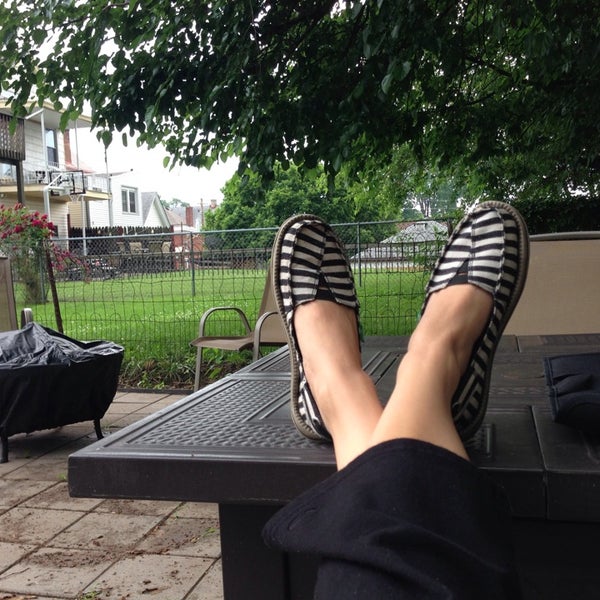
When to Seek Medical Attention
While most chigger bites can be treated at home, there are instances when you should consult a healthcare professional:
- If symptoms don’t improve after a few days of home treatment
- If you develop signs of infection, such as increased redness, warmth, or pus
- If you experience severe swelling or difficulty breathing (which could indicate an allergic reaction)
- If you have bites in sensitive areas, such as the genitals, that cause severe discomfort or interfere with urination
Preventing Chigger Bites: Strategies for Outdoor Protection
How can you protect yourself from chigger bites when enjoying the outdoors? Here are some effective prevention strategies:
- Wear appropriate clothing: Long sleeves, long pants tucked into socks, and closed-toe shoes can create a barrier against chiggers.
- Use insect repellents: Products containing DEET, picaridin, or oil of lemon eucalyptus can be effective against chiggers.
- Treat clothing and gear: Permethrin-treated clothing and gear can provide additional protection.
- Avoid high-risk areas: Stay on cleared trails and avoid walking through tall grass or dense vegetation.
- Shower promptly: After spending time outdoors, shower and wash your clothes in hot water to remove any chiggers that may have attached.
- Maintain your yard: Keep your lawn mowed and remove overgrown vegetation to reduce chigger habitats near your home.
Natural Remedies for Chigger Prevention
For those preferring natural alternatives, consider these options:
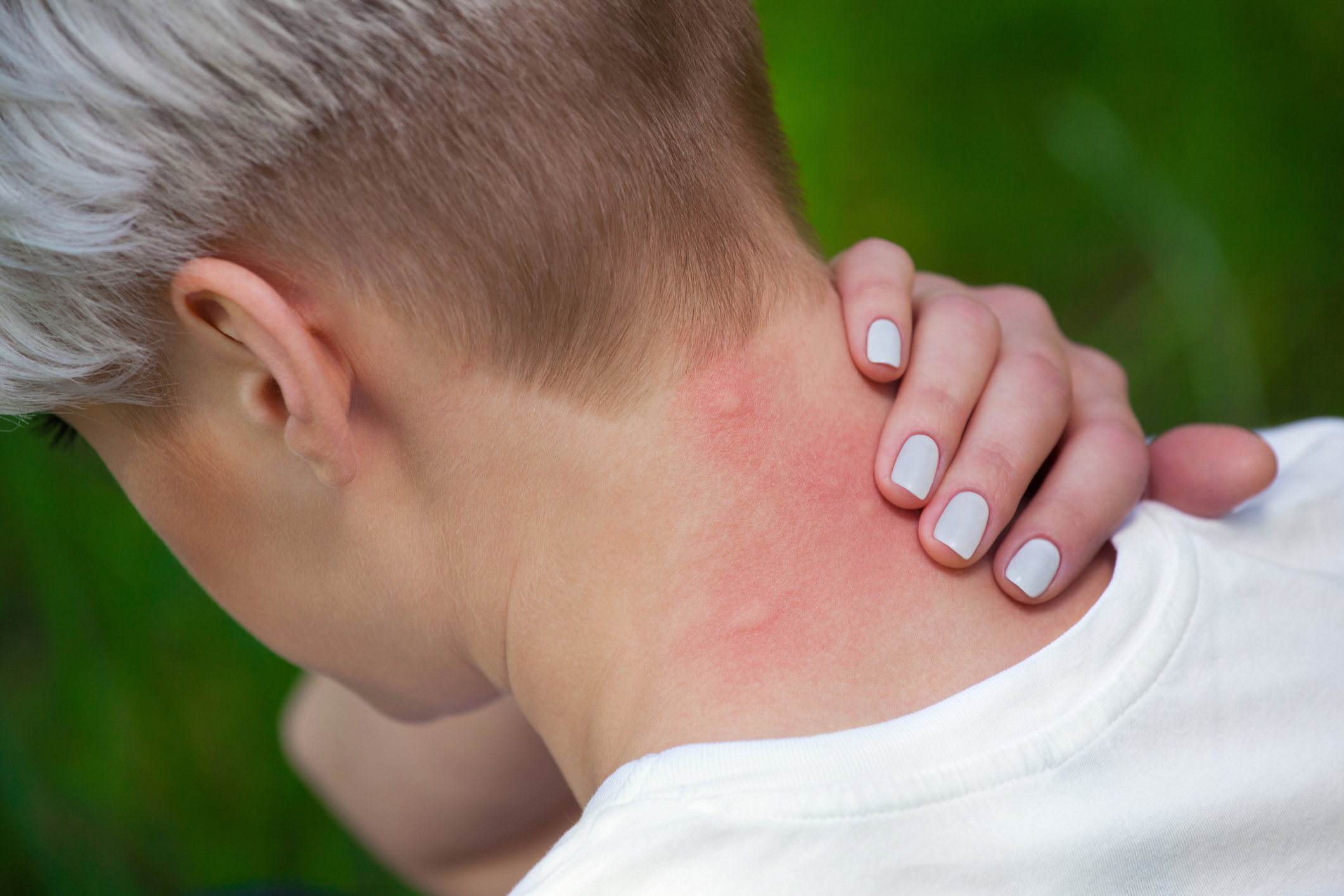
- Essential oils: Some people find success with oils like tea tree, eucalyptus, or citronella
- Sulfur powder: Dusting socks and pant cuffs with sulfur powder may deter chiggers
- Vinegar spray: A solution of apple cider vinegar and water may help repel chiggers
Remember, while natural remedies can be effective for some, they may not provide the same level of protection as commercial insect repellents.
The Impact of Chigger Bites on Health and Comfort
Are chigger bites dangerous to your health? In most cases, chigger bites are more of a nuisance than a serious health concern. Unlike some other biting insects, chiggers in North America do not transmit diseases to humans. However, the intense itching can lead to secondary issues:
- Difficulty sleeping due to persistent itching
- Skin infections if bites are scratched excessively
- Temporary discomfort and irritation in affected areas
In rare cases, individuals may experience more severe reactions:
- Allergic reactions to chigger saliva
- Swelling and pain in sensitive areas, such as the genitals
- Fever or general malaise in cases of numerous bites
Chigger Bites in Different Regions
Do chiggers pose different risks in various parts of the world? While North American chiggers don’t transmit diseases, some species in other regions can be more problematic:

- In parts of Asia, chiggers can transmit scrub typhus, a potentially serious bacterial infection
- Some tropical regions have chigger species that can cause more severe skin reactions
If traveling to areas where chiggers are known to transmit diseases, take extra precautions and consult with a travel health specialist before your trip.
The Lifecycle of Chiggers: Understanding Their Behavior
How do chiggers develop and what drives their biting behavior? Understanding the chigger lifecycle can help explain their seasonal activity and biting habits:
- Eggs: Adult female chiggers lay eggs in vegetation
- Larva: The six-legged larval stage emerges and seeks hosts
- Nymph: After feeding, larvae molt into eight-legged nymphs
- Adult: Nymphs mature into adults, which do not bite humans
Why do only larval chiggers bite humans? The larval stage is the only one that feeds on animals. Adult chiggers primarily eat plant material and small insects.
Chigger Activity Patterns
When are chiggers most likely to be active? Their behavior is strongly influenced by environmental factors:

- Temperature: Most active between 77°F and 86°F (25°C to 30°C)
- Humidity: Prefer moist environments but avoid standing water
- Time of day: Often most active in afternoons on warm days
- Seasonal patterns: Peak activity in late spring through early fall in temperate regions
Myths and Misconceptions About Chiggers
What common beliefs about chiggers are actually false? Let’s debunk some prevalent myths:
- Myth: Chiggers burrow under the skin
- Fact: Chiggers remain on the surface, feeding through a tube formed in the skin
- Myth: You can suffocate chiggers with nail polish or petroleum jelly
- Fact: By the time bites are noticed, chiggers have usually already detached
- Myth: Chiggers are too small to see
- Fact: While tiny, chiggers can be seen with a magnifying glass, especially when clustered
- Myth: All stages of chiggers bite humans
- Fact: Only the larval stage feeds on humans and animals
The Science Behind Chigger Bites
What makes chigger bites unique from other insect bites? The science behind their feeding process is fascinating:

- Enzymatic action: Chigger saliva contains powerful enzymes that liquefy skin cells
- Stylostome formation: The hardened tube formed by your body’s reaction is unique to chigger bites
- Prolonged feeding: Chiggers can feed for several days, unlike the quick bites of many insects
- Delayed reaction: The intense itching often starts hours after the initial bite
This unique feeding process contributes to the characteristic appearance and persistent itching associated with chigger bites.
Long-Term Management of Chigger-Prone Areas
How can you reduce chigger populations in your environment? If you live in an area prone to chiggers, consider these long-term management strategies:
- Landscape modification: Keep grass short and remove overgrown vegetation
- Chemical treatments: Apply appropriate acaricides to high-risk areas (consult a professional)
- Natural predators: Encourage beneficial insects and birds that feed on chiggers
- Moisture control: Improve drainage in damp areas to reduce chigger habitat
- Regular monitoring: Conduct periodic checks for chigger activity in your yard
Balancing Chigger Control with Environmental Concerns
How can you manage chiggers while minimizing environmental impact? Consider these eco-friendly approaches:
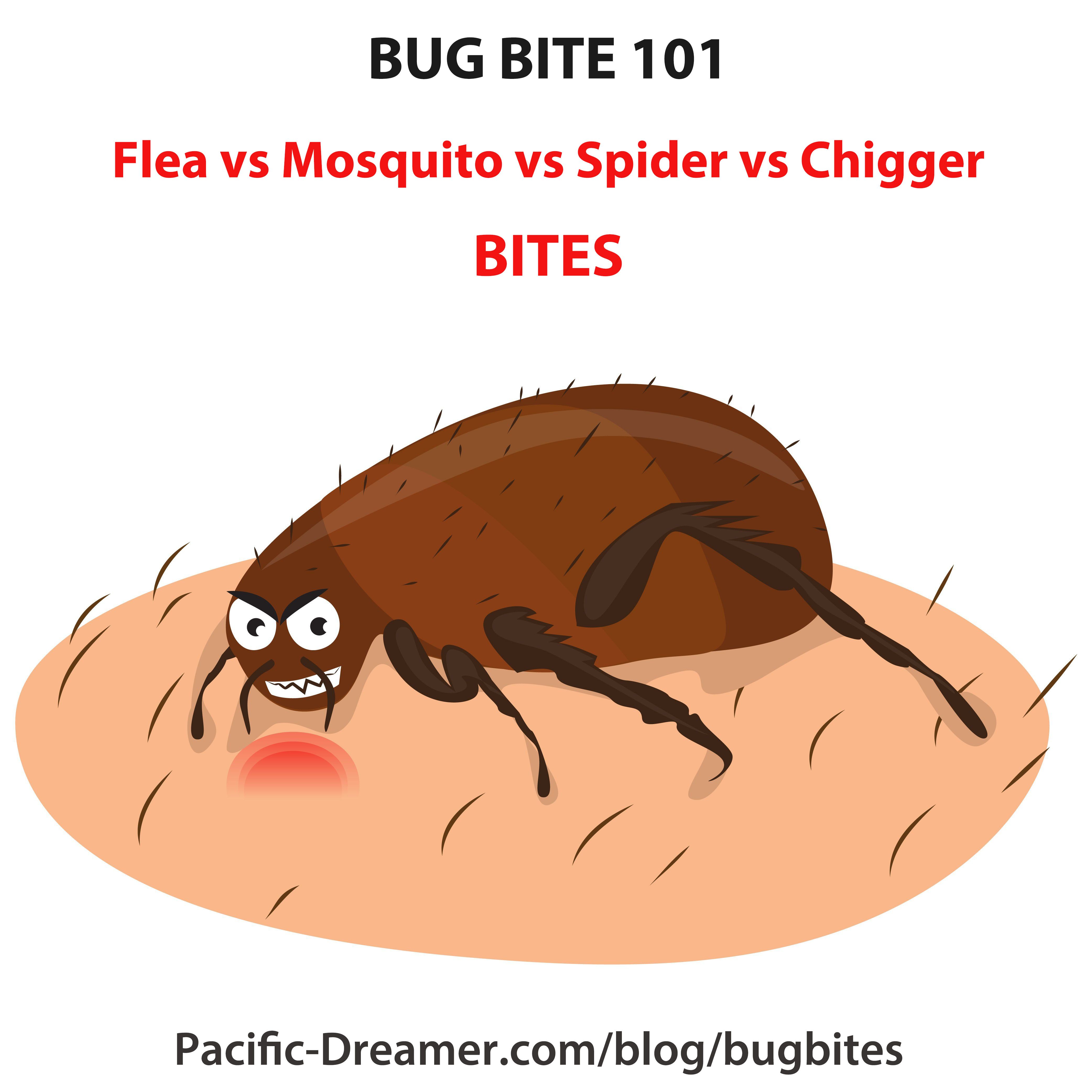
- Targeted treatments: Focus on high-risk areas rather than broad application of chemicals
- Integrated pest management: Combine multiple strategies for more effective, sustainable control
- Natural repellents: Use plant-based products when possible to reduce chemical exposure
- Habitat modification: Create environments less favorable to chiggers without harming beneficial species
By taking a balanced approach, you can reduce chigger populations while maintaining a healthy ecosystem in your outdoor spaces.
Chigger Bites: Treatment, Prevention, and Symptoms
We include products we think are useful for our readers. If you buy through links on this page, we may earn a small commission Here’s our process.
Healthline only shows you brands and products that we stand behind.
Our team thoroughly researches and evaluates the recommendations we make on our site. To establish that the product manufacturers addressed safety and efficacy standards, we:
- Evaluate ingredients and composition: Do they have the potential to cause harm?
- Fact-check all health claims: Do they align with the current body of scientific evidence?
- Assess the brand: Does it operate with integrity and adhere to industry best practices?
We do the research so you can find trusted products for your health and wellness.
Read more about our vetting process.
Was this helpful?
Chiggers, also known as red bugs, can give itchy bites. To treat, wash the area, dab on antiseptic, soothe with lotion, and use ice to reduce irritation. Contact a doctor if symptoms don’t improve.
Contact a doctor if symptoms don’t improve.
Chiggers are so tiny that you probably won’t notice when they jump from that tall blade of grass onto your skin. You won’t feel it as they hitch a ride right into your home. When you eventually do feel them, however, they can be extremely itchy.
Read on to learn about chiggers, what their bites look like, and how to treat the bites.
Chiggers live in tall weeds and grass, in berry patches, and in wooded areas. They may be in your backyard, by the lake, and clustered along your favorite hiking trail. They are most active on spring, summer and fall afternoons, when temperatures are warm and inviting.
They can quickly attach to your skin if you walk by and brush up against vegetation where they live. When the temperature falls below 60˚F (16˚C), chiggers become inactive. They die off when the temperature falls below 42˚F (6˚C).
Chiggers are very tiny and it generally takes a magnifying glass to see them. Adults are about 1/60 of an inch and have eight legs.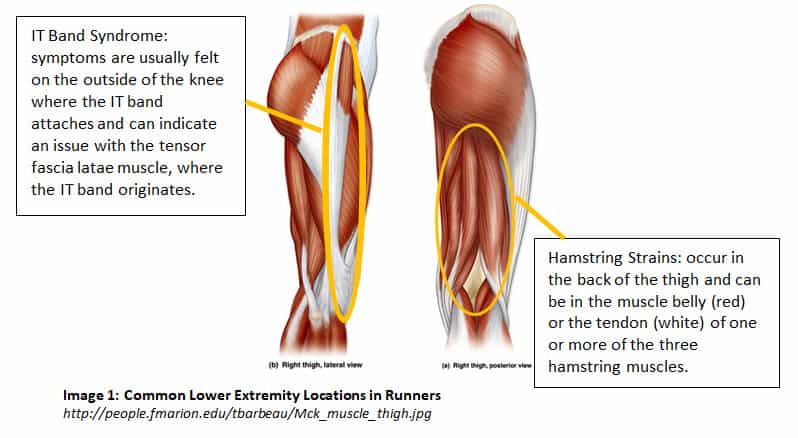 The larvae are red, wingless, six-legged creatures that measure less than 1/150 of an inch. Because of their red color, you might be able to spot the larvae when they cluster together. After they feast on human skin, they turn a yellowish color.
The larvae are red, wingless, six-legged creatures that measure less than 1/150 of an inch. Because of their red color, you might be able to spot the larvae when they cluster together. After they feast on human skin, they turn a yellowish color.
Only the larvae bite humans. They tend to choose warm, moist areas of the body. Chiggers have claws that help them grab onto skin. The chigger then attaches its mouth to the skin and injects saliva. The saliva contains an enzyme that breaks skin cells down to liquid form.
Your body responds by hardening skin cells around the saliva, creating a tube, or a stylostome through which the chigger sucks the host’s body fluids. Chiggers can stay attached and feeding for several days. Usually they last about 4 days before falling off.
Usually several chiggers are able to latch onto a person walking through an infected area. When the chigger falls off, you are left with reddish bumps. You may notice a bright red dot in the center — this is a remnant of the tube your skin formed in response to the chigger’s saliva. The bumps may look like welts, blisters, pimples, or hives.
The bumps may look like welts, blisters, pimples, or hives.
Chiggers can stay latched to the same spot for several days, and it’s common to be bitten by more than one. So bites will generally appear in groups and get larger for several days to a week.
Many insects tend to bite exposed skin that’s easy to get to. Chiggers like to bite in folds of skin as well as places where clothing fits tightly. Most chigger bites occur around the ankles, waist, armpits, crotch, or behind the knees.
You won’t feel it when the chigger latches on, and you probably won’t feel a thing when it bites. However, most people report symptoms within hours of the bite. The most problematic symptom of chigger bites is the intense itching and desire to scratch. Chigger bites on the penis can cause severe itching, swelling, and painful urination.
It can take anywhere from one to three weeks for chigger bites to heal. If you suspect you have chigger bites, immediately wash with soap and water. This will get rid of any remaining chiggers on your body. Then apply an antiseptic to any welts.
This will get rid of any remaining chiggers on your body. Then apply an antiseptic to any welts.
In the meantime, try to avoid scratching, as this can cause infection. You may use over-the-counter anti-itch medications like hydrocortisone cream or calamine lotion. You can also apply ice to the bites to relieve the itch.
Avoid very hot baths and showers. If you become infected or symptoms don’t improve, see your doctor. It’s a common misperception that chiggers burrow under the skin. They don’t, so there is no need to try to remove them.
Shop for over-the-counter anti-itch medications online at Amazon.
Chigger bites are uncomfortable, itchy, annoying, and can make it difficult to sleep. In most cases, chigger bites don’t cause any harm to your health. Chiggers feed on skin cells, but not on blood. They don’t carry or transmit disease.
However, chigger bites can become infected from too much scratching. Notify your doctor if you have swelling, fever, or other signs of infection.
Spring, summer, and fall are prime time for chigger bites. When you’re in wooded areas that may be chigger-infested, try not to brush up against vegetation. When hiking, walk in the center of trails, rather than along the sides.
Wear long sleeves and long pants that can be tucked into your socks or shoes. Use insect or tick repellent, especially around the tops of your shoes, shirt neck, cuffs, and waistband. Shower as soon as you go indoors. Wash your clothes in hot water.
Shop for insect repellent online at Amazon.
Chigger Bites: Treatment, Prevention, and Symptoms
We include products we think are useful for our readers. If you buy through links on this page, we may earn a small commission Here’s our process.
Healthline only shows you brands and products that we stand behind.
Our team thoroughly researches and evaluates the recommendations we make on our site. To establish that the product manufacturers addressed safety and efficacy standards, we:
- Evaluate ingredients and composition: Do they have the potential to cause harm?
- Fact-check all health claims: Do they align with the current body of scientific evidence?
- Assess the brand: Does it operate with integrity and adhere to industry best practices?
We do the research so you can find trusted products for your health and wellness.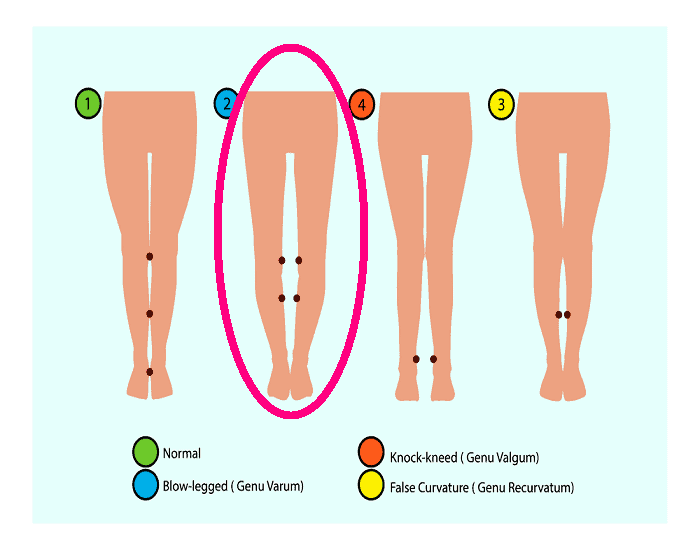
Read more about our vetting process.
Was this helpful?
Chiggers, also known as red bugs, can give itchy bites. To treat, wash the area, dab on antiseptic, soothe with lotion, and use ice to reduce irritation. Contact a doctor if symptoms don’t improve.
Chiggers are so tiny that you probably won’t notice when they jump from that tall blade of grass onto your skin. You won’t feel it as they hitch a ride right into your home. When you eventually do feel them, however, they can be extremely itchy.
Read on to learn about chiggers, what their bites look like, and how to treat the bites.
Chiggers live in tall weeds and grass, in berry patches, and in wooded areas. They may be in your backyard, by the lake, and clustered along your favorite hiking trail. They are most active on spring, summer and fall afternoons, when temperatures are warm and inviting.
They can quickly attach to your skin if you walk by and brush up against vegetation where they live. When the temperature falls below 60˚F (16˚C), chiggers become inactive. They die off when the temperature falls below 42˚F (6˚C).
They die off when the temperature falls below 42˚F (6˚C).
Chiggers are very tiny and it generally takes a magnifying glass to see them. Adults are about 1/60 of an inch and have eight legs. The larvae are red, wingless, six-legged creatures that measure less than 1/150 of an inch. Because of their red color, you might be able to spot the larvae when they cluster together. After they feast on human skin, they turn a yellowish color.
Only the larvae bite humans. They tend to choose warm, moist areas of the body. Chiggers have claws that help them grab onto skin. The chigger then attaches its mouth to the skin and injects saliva. The saliva contains an enzyme that breaks skin cells down to liquid form.
Your body responds by hardening skin cells around the saliva, creating a tube, or a stylostome through which the chigger sucks the host’s body fluids. Chiggers can stay attached and feeding for several days. Usually they last about 4 days before falling off.
Usually several chiggers are able to latch onto a person walking through an infected area. When the chigger falls off, you are left with reddish bumps. You may notice a bright red dot in the center — this is a remnant of the tube your skin formed in response to the chigger’s saliva. The bumps may look like welts, blisters, pimples, or hives.
When the chigger falls off, you are left with reddish bumps. You may notice a bright red dot in the center — this is a remnant of the tube your skin formed in response to the chigger’s saliva. The bumps may look like welts, blisters, pimples, or hives.
Chiggers can stay latched to the same spot for several days, and it’s common to be bitten by more than one. So bites will generally appear in groups and get larger for several days to a week.
Many insects tend to bite exposed skin that’s easy to get to. Chiggers like to bite in folds of skin as well as places where clothing fits tightly. Most chigger bites occur around the ankles, waist, armpits, crotch, or behind the knees.
You won’t feel it when the chigger latches on, and you probably won’t feel a thing when it bites. However, most people report symptoms within hours of the bite. The most problematic symptom of chigger bites is the intense itching and desire to scratch. Chigger bites on the penis can cause severe itching, swelling, and painful urination.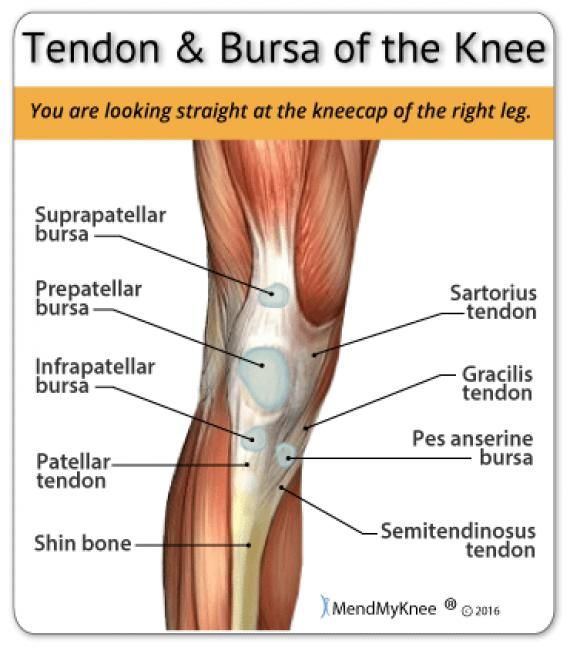
It can take anywhere from one to three weeks for chigger bites to heal. If you suspect you have chigger bites, immediately wash with soap and water. This will get rid of any remaining chiggers on your body. Then apply an antiseptic to any welts.
In the meantime, try to avoid scratching, as this can cause infection. You may use over-the-counter anti-itch medications like hydrocortisone cream or calamine lotion. You can also apply ice to the bites to relieve the itch.
Avoid very hot baths and showers. If you become infected or symptoms don’t improve, see your doctor. It’s a common misperception that chiggers burrow under the skin. They don’t, so there is no need to try to remove them.
Shop for over-the-counter anti-itch medications online at Amazon.
Chigger bites are uncomfortable, itchy, annoying, and can make it difficult to sleep. In most cases, chigger bites don’t cause any harm to your health. Chiggers feed on skin cells, but not on blood. They don’t carry or transmit disease.
However, chigger bites can become infected from too much scratching. Notify your doctor if you have swelling, fever, or other signs of infection.
Spring, summer, and fall are prime time for chigger bites. When you’re in wooded areas that may be chigger-infested, try not to brush up against vegetation. When hiking, walk in the center of trails, rather than along the sides.
Wear long sleeves and long pants that can be tucked into your socks or shoes. Use insect or tick repellent, especially around the tops of your shoes, shirt neck, cuffs, and waistband. Shower as soon as you go indoors. Wash your clothes in hot water.
Shop for insect repellent online at Amazon.
Who can bite at night? Recognizing an insect by its bite
Bites during the day : In the daytime, bites may occur from fleas. If you have pets, this probability tends to 100% Bites at night : If the bites on the body are at night, then most likely you are bitten by bedbugs or mosquitoes. In bedbugs, the bites are focused in one place and lined up along which the bedbugs walk. It is also important to know that bed bugs may not bite all family members. This may be due to various factors (the presence of outerwear, the thinness of the skin).
In bedbugs, the bites are focused in one place and lined up along which the bedbugs walk. It is also important to know that bed bugs may not bite all family members. This may be due to various factors (the presence of outerwear, the thinness of the skin).
Mosquito bites, on the contrary, are more chaotic and scattered throughout the body.
Nocturnal bites of insects, parasites that feed on human blood, are by no means a rare phenomenon. Pests prefer to become active during the dark hours of the day and are quite capable of turning a person’s life into a living nightmare.
Of course, everything depends on the type of attacking parasite and the degree of contamination of the premises. Often, bleeding or itchy blisters are attributed to dermatitis and other skin diseases. It is almost impossible to notice domestic pests during the day – fleas or linen lice, like bedbugs, prefer to sit quietly at this time. But one has only to go to bed and plunge into sweet dreams, as the parasites go hunting.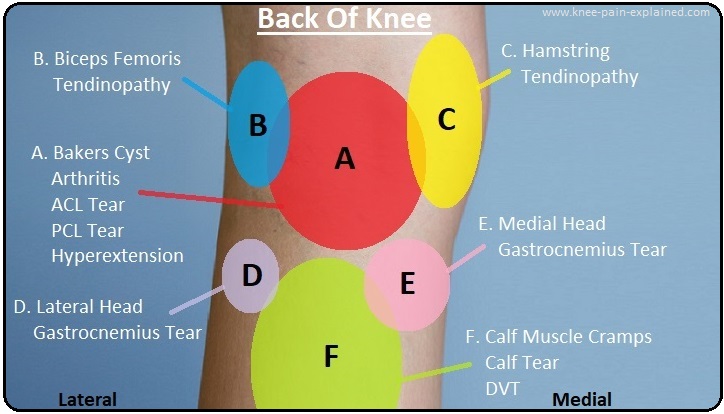 So how to understand: does the bug bite at night, or is the problem in a completely different pest?
So how to understand: does the bug bite at night, or is the problem in a completely different pest?
Specialists of the Sanepidemstanciya.com service recommend:
If itchy bite marks appear on your body during the night, you should pay attention to their appearance, shape, and localization. Remember that left unattended indoor pest infestation is especially dangerous for children, pregnant women, the elderly and allergy sufferers.
Recognizing nocturnal visitors
Hiding in the folds of bed linen or only temporarily visiting the bed at night, the threat may be associated with an attack by one of these pests:
- Mosquitoes . They are activated at night in the summer, in the presence of a humid environment in the basement, they can be located in the living quarters of the first floor all year round. Bites can be located on any part of the body.
- Fleas . The bites of these pests are localized in the neck, on the legs, arms, chest.

- Bed bugs . They leave chains of bites mainly on the back, arms, buttocks. They attack during the deepest sleep – from 3 to 7 in the morning.
- Linen lice . It is almost impossible to see a pest hiding in the seams of bedding. Bites appear at night, are located in the area of localization of blood vessels (groin, armpits).
- Cockroaches . Contrary to popular belief, they can bite. If access to water and food is blocked in an infected room, insects can attack people. Areas near the nose and lips are affected.
What are mosquitoes afraid of?
Having determined who can bite at night in bed, you can move on to action. If mosquitoes have become the source of painful bites in a house or apartment, you can easily solve the problem using a wide range of tools and methods. The most “long-playing” is the use of ultrasonic electronic repellers. Unlike fumigators, the device can be used throughout the night without affecting human health.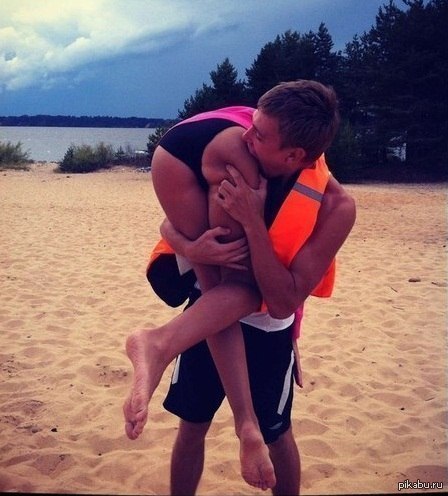
No less popular are simpler and more affordable means. Fumigation devices can be designed for use with plates or liquids evaporating from a container. But it is not recommended to leave such a device plugged into the network for a long time. In addition, at night you will have to refuse airing.
Bed bug as a threat
If adults or children are bitten by a bed bug at night, characteristic marks remain on the body, which are difficult to confuse with any other skin lesions. The track of traces mainly on the back, thighs, buttocks causes severe itching and becomes a source of irritation. In addition, in the course of its life, the pest emits a very specific smell, by which the appearance of bedbugs can also be detected over time.
It is important to understand that it is impossible to get rid of an insect without the use of modern means and technologies for disinfestation. Features of the life of bedbugs do not imply the possibility of poisoning them through food or water. Blood-sucking insects easily hide under wallpaper, inside furniture, household appliances, they can live in children’s plush toys, upholstery of upholstered furniture, mattresses. The further the situation goes, the more difficult it will be to completely get rid of pests. And only professionals have drugs and technical means that can radically change the situation.
Blood-sucking insects easily hide under wallpaper, inside furniture, household appliances, they can live in children’s plush toys, upholstery of upholstered furniture, mattresses. The further the situation goes, the more difficult it will be to completely get rid of pests. And only professionals have drugs and technical means that can radically change the situation.
Linen lice: how to fight?
Who can bite at night in bed if bite marks are localized in the elbows and under the knees, on the neck, under the chest and other most hot spots of the human body? Such traces are left by lice, which differ from their counterparts only in that they live and lay eggs not on the body, but directly in the bed itself. It is worth paying attention to the fact that it is almost impossible to recognize the presence of parasites. During the day they are not active. And in the absence of contact with the source of food – the human body, insects may well live without food for many months.
Do-it-yourself pest control is a serious problem that can cause a lot of trouble. Of course, you can get rid of all bedding, spend time boiling clothes, but without a complete sanitization of housing, it will be impossible to guarantee the absence of risks of re-infection.
Fleas: where do they come from?
When a bug bites at night, the localization of wounds on the body quite clearly indicates their belonging. But what if a small rash is localized in various parts of the body? First of all, you need to make sure that small black fleas, which pet owners are used to seeing, do not jump on the floor. Contrary to popular belief, they rarely attack humans, preferring creatures with a higher body temperature. But if earthen parasites or their other varieties get into the housing, painful bites cannot be avoided.
It is important to understand that flea control has its own specifics. Insects move quickly enough, lead an active nocturnal lifestyle. And to recognize them from a photo, distinguishing them from other species, is possible only under a magnifying glass. Regular cleaning, if the number of pests is already off scale, will not be enough. We’ll have to use much more intense chemicals.
And to recognize them from a photo, distinguishing them from other species, is possible only under a magnifying glass. Regular cleaning, if the number of pests is already off scale, will not be enough. We’ll have to use much more intense chemicals.
What to do if you are bitten by an insect?
Finding itchy bites on the body requires immediate action. The first thing to remember is sanitization – hydrogen peroxide and other disinfectant solutions will help to avoid infection. To prevent the development of allergic reactions, it is worth taking an antihistamine. If an independent study of housing does not provide intelligible information about which particular insect has become the source of problems, do not hesitate. Employees of the sanitary service “Sanepidemstanciya.com” will help identify the source of damage, offer modern means of dealing with the source of danger. All work is guaranteed to prevent re-infection of the object.
What and who can bite at night at home in bed.
 Types of insects.
Types of insects.
One fine morning you wake up with a strong itch and see that red bite marks have appeared on your body. It can be blood-sucking insects or parasites. Before you start fighting them, you need to know what can bite in bed. By observing the appearance of bites, their position on the body and the approximate time of their appearance, it is easy to determine the culprits.
Mosquito bites
Mosquito bites are not noticeable, and we often notice this when the bite begins to itch. Once the mosquito has tracked down the prey, it sticks with its proboscis to thin, well-circulating patches of skin. Mosquito bite symptoms:
- redness;
- itching;
- swelling;
- blisters.
Itching and redness appear a few minutes after the bite. If a blister forms at the puncture site, the skin around it swells and becomes red.
Why do mosquitoes bite?
If someone bites you at night, especially in summer, it is most likely a mosquito. They are especially active at dusk. Darkness does not prevent them from tracking down their prey. Finding it helps carbon dioxide, which is released by a person when exhaling. Mosquitoes feel it at a distance of up to 50 meters.
They are especially active at dusk. Darkness does not prevent them from tracking down their prey. Finding it helps carbon dioxide, which is released by a person when exhaling. Mosquitoes feel it at a distance of up to 50 meters.
Mosquitoes react to heat and body odor. Therefore, the warmer the room, the more they bite. Mosquitoes choose their prey by the characteristic smell, the more bacteria on the surface of the skin are involved in the formation of the smell, the higher the likelihood of a bite.
Mosquito bites – harmless or dangerous
A mosquito bites because it needs blood protein to produce eggs. When it bites, the immune system recognizes its saliva as a threat and releases histamine. Itching is an allergic reaction to a bite. It is usually harmless, but annoying and disturbing. If the bite is not combed, then the itching gradually decreases and after a few days there will be no trace of redness. If the bubble is combed, the wound may become inflamed.
How to get rid of mosquitoes
Mosquitoes are the companions of summer, and it is impossible to completely get rid of them, but you can reduce the likelihood of bites. To do this, put mosquito nets on windows and doors. You can leave the air conditioner on as mosquitoes avoid cool air. Ultrasonic traps, fumigators, spirals help to fight them well.
If you prefer traditional methods, place geranium flowers and peppermint on the window. You can treat the frames with tincture of wheatgrass, wormwood. Essential oils of clove, anise or tea tree repel mosquitoes.
Bedbugs
Mosquitoes are the most harmless of those that can bite at home. They can be tolerated, and in the cold period they usually disappear. Another thing is if you are attacked by bedbugs.
Bed bugs reproduce very quickly and can withstand temperatures from 4 to 40 degrees. They not only live in bed, but also remain in carpets, sofas, lamps or picture frames. They hide during the day, and at night they look for their owners to take blood. Bed bugs are not picky about their diet. These parasites usually feed on human blood, but in an emergency they can spread to animals.
Bed bugs are not picky about their diet. These parasites usually feed on human blood, but in an emergency they can spread to animals.
What a bed bug looks like
When a bed bug is small, it is difficult to see it. When its size reaches 6 millimeters, it is already visible to the naked eye. After a bloody feast, they become fatter, even a little longer. This is what a bed bug looks like:
- body length from 4 to 6 millimeters;
- reddish brown;
- six hairy legs;
- flat body shape.
Bed bug eggs are creamy white in color and are only a millimeter in size and therefore difficult to recognize. Bedbugs can live without food for up to 6 months.
Bed bug bites
If you wake up in the morning with noticeable bites, you may have been bitten by bed bugs. You can determine what it is they are by looking at the location of the spots.
The bug rarely enters the blood vessel the first time. These little bloodsuckers avoid long walks on the body, their bites always have an ordinary design (street of bugs). When attacked, exposed areas of the body are especially affected: legs, arms, neck and face.
When attacked, exposed areas of the body are especially affected: legs, arms, neck and face.
The effect of a bite depends on the sensitivity of the person. In some, it causes severe swelling, in others, swelling and itching, and in 20% of people there is no reaction at all. A bed bug bite is usually painless. However, if you experience pain, then see a doctor as soon as possible and treat for bed bugs.
How to find them
Bed bugs hide during the day, but if you carefully examine the bed, you can find their traces.
- It bites a person in a blood vessel, resulting in blood leakage. Therefore, small blood stains appear on the sheet, bedspread and nightwear.
- Another sign of infection is small black excrement that remains on the skin, footpaths. Fecal particles are approximately 0.5-1.0 mm in size. There are especially a lot of them near the daytime shelter of the parasite.
- In their development they go through five larval stages, each phase beginning with a molt.
 The remains of the molt remain near the nests.
The remains of the molt remain near the nests. - One of the typical signs of infection is a repulsive sweet smell. It is especially felt with a strong infection.
Bed bugs prefer to live in living, enclosed rooms close to places to sleep and rest. Traces of their existence can be found on mattresses, bed frames or behind wallpaper. Bed bugs love warmth and darkness. They hide in crevices, crevices, furniture joints, preferring materials such as wood, paper and textiles.
Note from the expert of GorSES:
Of course, you can fight bed bugs on your own, but most likely you will lose precious time and lose the battle. Therefore, it is better to turn to professionals. They know where little invaders might be hiding and have effective, safe disinfectants.
Fleas in bed
In addition to bedbugs, mosquitoes, there are other parasites: for example, fleas. Flea vinegar is similar to mosquito. From a mosquito puncture, it differs in smaller size and quantity. Flea bites are usually concentrated in one place. They itch a lot, swell, blush. In addition, scratches can become inflamed, and pathogens can enter the wound.
Flea bites are usually concentrated in one place. They itch a lot, swell, blush. In addition, scratches can become inflamed, and pathogens can enter the wound.
Types of fleas
There are over 2,500 species of fleas that specialize in different host animals. Usually they rarely change owners, but in the absence of food they can choose another victim. Several species are dangerous for humans in our latitudes.
- The human flea (pulex allerans) has been virtually eradicated but can occasionally be found. She mainly lives in beds, carpets, upholstered furniture and comes out of the nest to drink blood.
- The cat flea (ctenocephalides felis) lives on and around cats. It is transmitted to dogs and people, as it is much less attached to the owner.
- The dog flea (ctenocephalides canis) behaves very much like the cat flea, but is more attached to the owner. In exceptional cases, it can run over to a person, but usually cannot survive there.
- Other types of fleas that can bite humans are hedgehog, pigeon, rat or chicken fleas.

All species go through four stages of development. Well fed with blood, adult females lay up to 50 eggs per day. Flea eggs do not have an adhesive effect and can fall out of fur, clothing at any time. This is one of the reasons why fighting them is laborious, annoying.
After 3-10 days the eggs hatch into larvae. They primarily feed on blood in adult droppings, as well as dead skin, hair, and other organic debris. The larvae are not yet able to suck blood. After a few days at the larval stage, they pupate, and after 7-14 days adult parasites appear. A flea lives, after hatching, on average 4-12 weeks.
What it looks like
The body of the flea is brown. It has six strong long jump legs and a sucking, burning trunk for eating. Thanks to the flattened sides, they can move through hair, fur, and other surfaces. Depending on the species, an adult flea has a size of 1.5 to 4 mm. By the way, fleas cannot fly, but they can jump very far. Their specially built legs allow them to jump distances up to one meter.
How to deal with
Effective flea control is not a one-time action, but a combination of different measures over a long period. It is necessary to start the fight by determining the cause of the infection. Do pets have fleas, or did they accidentally jump into the house. The reason may be an old sofa from a flea market, a mattress from the attic.
If animals have bloodsuckers, then in addition to treatment, it is necessary to disinfect the couch, preferably the apartment. If fleas are found in the bed, then it is necessary to wash the linen in hot water, vacuum the mattresses thoroughly. All of these measures can help with a minor infection. With a large area of infection, and a significant number of parasites, it is better to call a special organization.
Louse
It is easy to understand that you are being bitten by a louse. Firstly, severe itching occurs exclusively on the hairy parts of the body (head, beard, eyebrows, pubis). Secondly, they bite throughout the day, and not just at night, like other blood-sucking insects. There are three types of lice that feed on human blood:
There are three types of lice that feed on human blood:
- head lice;
- pubic;
- underwear.
Lice live in the host’s hair or clothing. The female animal lays eggs that can develop without male fertilization. Human lice eggs are covered with a hard shell of chitin and attached to the host’s hair or textile fibers of clothing. They are insoluble in water, so they are difficult to wash out.
The most dangerous are linen lice, they can cause fever, headache. To combat them, it is necessary to thoroughly wash the linen at a temperature of 60 ° C. Mattresses, pillows, blankets should be placed in a plastic bag for a month. In winter, you can take out things in the cold for a day.
The sooner you identify who bites in bed, the easier it will be to get rid of the parasites. Call 8 (800) 775-22-97.
Review:
We rented an apartment on the first floor, everything seemed to be clean and tidy. A few days later, all the legs were covered with a small rash, and the child had his hands.


 The remains of the molt remain near the nests.
The remains of the molt remain near the nests.